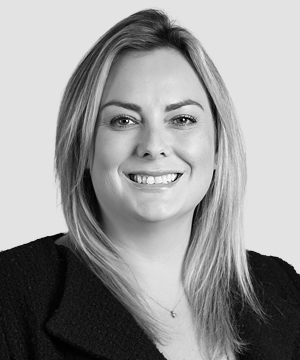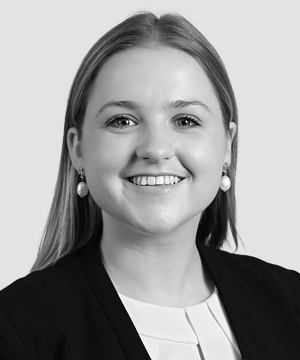

Posted: 10/02/2025
The case of Getty Images (US) Inc and Ors v Stability AI Ltd [2025] EWHC 38 (Ch), which the team previously reported on (see here), continues to progress through the English High Court. Most recently, the claimants sought for Thomas M Barwick Inc, the sixth claimant, to act as a representative for a class of individuals in the claim. On 14 January 2025, Mrs Justice Smith handed down judgment after Stability applied to seek an order that the sixth claimant may not act as a representative.
Whilst this judgment is procedural in nature, it provides valuable insights into the application of CPR 19.8, the rule governing representative actions, which continues to be tried and tested as collective group actions evolve via the courts in England.
In January 2023, Getty Images – a ‘pre-eminent global visual content creator and market place’ – commenced legal proceedings in the English High Court against Stability, an open-source generative artificial intelligence (GenAI) company. Getty alleges that Stability infringed its intellectual property rights through its deep learning GenAI model, known as 'Stable Diffusion,' which automatically generates images.
Broadly speaking, Getty alleges that Stability ‘scraped’ millions of images from various Getty-operated websites without consent, and unlawfully used those images to train and develop Stable Diffusion. Getty also alleges that the output of Stable Diffusion (synthetic images accessible to users in the UK) infringes intellectual property rights by reproducing substantial parts of works in which copyright subsists and/or bears a UK registered trade mark.
The first to fifth claimants are members of a group of companies ultimately owned and controlled by Getting Images Holdings Inc. The claimants pleaded in their particulars of claim that the sixth claimant, Thomas M Barwick Inc, should act as a representative for a class of around 50,000 individual copyright owners per CPR 19.8. The sixth claimant exclusively licensed images and videos to Getty and so, it was said, should represent other copyright owners who have done the same and whose copyright Getty alleges has been infringed by Stability.
At the case management conference in November 2024, the defendant sought an order that the sixth claimant may not act as a representative for a class of around 50,000 individual copyright owners. The court therefore had to consider whether the sixth claimant had the same interest as the represented parties and whether the class could be adequately defined to fall within the parameters of CPR 19.8.
In a representative action under CPR 19.8, a representative pursues a claim on behalf of a larger group of claimants sharing the ‘same interest’. All members of the represented class must have a common interest in the claim’s outcome. It is sufficient that there is a common issue (or issues) such that the representative can effectively promote and protect the interests of all members of the represented class. That is not possible where there is a conflict of interest between class members.
The claimant must define the entire class it intends to represent. Once approved, any person or entity within that definition automatically becomes a claimant, but can opt out if they choose.
In this case, the claimants proposed the following class definition:
‘…the class of persons represented by the sixth claimant are those who are owners of the copyright subsisting in the artistic works and film works that have been licensed on an exclusive basis to the first claimant, the copyright in which has been infringed by the defendant (emphasis added). The persons that fall within such class can be identified on the basis that (i) they have entered into an exclusive licence with the first claimant in respect of artistic works and/or film works; and (ii) the exclusively licensed works include works which were used to train Stable Diffusion…’
Stability criticised this definition as unclear, imprecise, and dependent on a disputed issue in the litigation (whether Stability infringed copyright at all).
In coming to a decision, Mrs Justice Smith considered whether the class was sufficiently defined and whether its members could be identified.
The court found that the latter part of the first sentence of the proposed class definition was entirely dependent on the proceedings' outcome; whether Stability infringed copyright is a question for trial. As such, it falls foul of the principle in Emerald Supplies Ltd v British Airways Plc [2011] Ch 345, which requires the class to be clearly defined and identifiable regardless of the outcome of the proceedings. Even if the class definition was amended to include all exclusive licensors, rather than just those whose copyrights have allegedly been infringed, Mrs Justice Smith noted that it ‘would be wholly disproportionate and practically impossible without significant resources’ to determine which copyright works were used to train Stable Diffusion, and the parties failed to present any proposals to overcome this challenge.
Even if the court was incorrect on the above from a jurisdictional perspective, Mrs Justice Smith explained, she was not persuaded to exercise her discretion to permit the proposed representative action in any event. She held that not only was the proposed class definition inadequate, neither the parties nor the court know how the representative claim would be handled at trial.
The claimants proposed an alternative approach – to proceed without joining all exclusive licensors in the action, in accordance with section 102 of the Copyright, Designs and Patents Act 1988 and CPR 19.3. However, the claimants had not made a formal application in this regard; the proposal was made in a witness statement supporting the application.
The court was required to consider how the claims of exclusive licensees are to be tried in the most effective and proportionate way. The key question concerned whether there is likely to be any prejudice to Stability by reason of the claimants’ proposal.
Ultimately, the claimants’ proposal was dismissed. Whilst the claimants failed to make a formal application, they also failed to provide sufficient evidence and comfort that Stability would be protected from future claims for the same relief by exclusive licensors not party to the proceedings.
Interestingly, however, the Mrs Justice Smith noted that ‘in many ways an order under CPR 19.3 would make very good sense’ if there was no risk to the defendant of future claims. The court therefore left open the possibility of the claimants making an application of this nature in the future, should it see fit.
This judgment serves as a reminder for those seeking to bring a representative action under CPR 19.8 that the class must be appropriately defined, and membership of the class must not depend on the litigation’s outcome. Additionally, the court appears reluctant to exercise its discretion to allow a representative action where such an approach would complicate, rather than simplify, proceedings given that the purpose of a representative action is to achieve the intention of the overriding objective in CPR 1 to enable the court to deal with cases justly and at proportionate cost.
As this case and other recent ones before it demonstrate, a representative action is not suitable for all mass actions. Where exclusive copyright licensees are subject to bespoke statutory rules, we may see a new route to representative actions for copyright owners under section 102 of the Copyright, Designs and Patents Act 1988 and CPR 19.3. The UK Intellectual Property Office has launched a Copyright and AI Consultation, which proposed changes to copyright law in the UK – it remains to be seen what impact this may (or may not) have on claims of this nature.
The judgment also underscores the importance of providing clear evidence and proposals when seeking to represent a class of claimants. Without this, the court is likely to dismiss such applications to avoid potential prejudice and ensure fair proceedings.
Getty Images v Stability AI is being closely followed as a significant piece of GenAI-related litigation in the UK today. The team will continue to provide updates as the claim develops – watch this space!

Email Charlotte
+44 (0)20 7457 3107

Email Charlotte
+44 (0)20 7457 3119